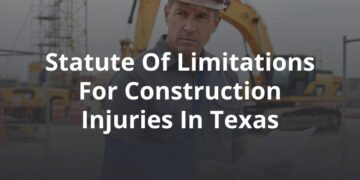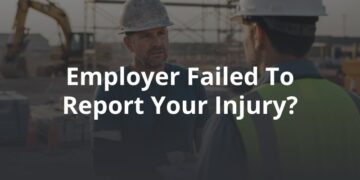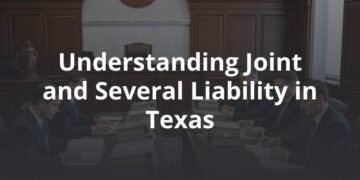You’re driving down the streets of Austin, Texas. You are in your trusty vehicle, equipped with various safety features to keep you secure on the road. Among these features, airbags stand out as vital protectors during a collision.
But have you ever wondered how serious a crash must be for airbags to deploy? This blog sheds light on the mechanisms behind these life-saving devices.
Understanding Airbag Deployment
Airbags are a critical component of your vehicle’s safety system. They are designed to complement other safety features. For instance, they work with seat belts to protect occupants during accidents. Frontal and side-impact airbags are the most common types. But, all airbags share a common purpose: to safeguard you in a collision.
Frontal Airbags
Every vehicle is required to have frontal airbags. These airbags are engineered to deploy in moderate to severe crashes. Yet, depending on the impact’s location, they may even deploy in a minor accident.
When an accident occurs, the airbag system’s electronic control unit collects data. Then, the system decides how many airbags should be deployed. This information triggers the igniter, initiating a chemical reaction that inflates the airbag in a fraction of a second.
Side Airbags
Some vehicles have side airbags that deploy even faster due to their proximity to the driver or passengers. These airbags primarily protect the head and chest area in a side-impact collision.
Airbag Deployment Statistics
Here are some key statistics related to airbag deployment:
- According to the National Highway Traffic Safety Administration (NHTSA), frontal airbags saved an estimated 50,457 lives from 1987 to 2017.
- Frontal airbags deploy in nearly all moderate to severe frontal collisions.
- Side-impact airbags, designed to protect the head and chest, deploy in side-impact collisions. That way, they can significantly reduce the risk of head and chest injuries.
- Statistics show that using seat belts with airbags provides the highest protection during a crash.
- Modern vehicles have advanced sensors and technology to fine-tune airbag deployment. New tech reduces the risk of unnecessary deployments.
Understanding these statistics underscores the importance of using seat belts and adhering to safety guidelines to maximize the effectiveness of airbags.
Airbag Safety Tips
Understanding how airbags work is essential, but maximizing their effectiveness is equally crucial.
Here are some safety tips to ensure your airbags protect you as intended:
- Buckle Up: Always wear your seat belt. Airbags and seat belts are a dynamic duo. If the airbags deploy and your seat belt does not restrain you, you risk injuries from the airbag itself.
- Maintain Distance: At least 10 inches of space between yourself and the steering wheel allows airbags to function optimally.
- Rear Seat for Kids: Children under 13 should sit in the backseat. In a collision, they’ll be protected by side airbags. Ensure they are in an appropriate child restraint system for their age and size.
- Replace Deployed Airbags: Airbags can only be deployed once. After an accident, when getting your car repaired, have the airbags replaced by a certified technician to maintain your safety.
These airbag safety tips can make a significant difference in ensuring that your airbags fulfill their vital role in safeguarding you during a collision.
When Airbags Don’t Deploy: Causes and Consequences
While airbags are crucial in protecting you during an accident, they aren’t meant to deploy in all crash scenarios. Several factors influence airbag deployment:
Crash Severity
In mild or moderate crashes, seat belts may provide sufficient protection, rendering airbag deployment unnecessary.
Passenger Detection
Some advanced frontal airbag systems automatically deactivate the passenger-side airbag if a small-statured passenger or child is detected. This highlights the importance of children sitting in the backseat.
Defective Airbags
Airbags can be defective in rare cases, leading to non-deployment during severe crashes. Such situations can result in significant injuries, prompting victims to seek legal recourse against the manufacturer for their losses.
Common Misconceptions About Airbags
Airbags are an essential safety feature in today’s vehicles, but they often come with misconceptions that can impact their proper use. Let’s debunk some of the most common myths associated with airbags:
Myth 1: Airbags Are Soft Cushions
Contrary to popular belief, airbags are not soft cushions designed for comfort. They deploy at an incredible speed, roughly 200 miles per hour, to protect during a collision. They are not meant to be touched or leaned on when not deployed.
Myth 2: Airbags Inflate Slowly
In reality, airbags inflate incredibly quickly. It takes less than 1/20th of a second for an airbag to inflate after deployment. This speed is essential to provide immediate protection during a crash.
Myth 3: Airbags Are Dangerous
While airbags can cause injuries if not used properly, they are far safer than the alternative—directly impacting the vehicle’s interior. Airbags are designed to limit injuries, especially in moderate to severe collisions.
Myth 4: Airbags Deploy Randomly
Airbags do not deploy without reason. They rely on sensors. The collision’s severity determines whether deployment is necessary. Minor fender benders or pothole impacts won’t trigger airbag deployment.
By dispelling these misconceptions, we can better understand airbags’ true purpose and function in vehicle safety.
Contact our Car Accident Law Firm in Austin, TX
If you’ve been injured in an accident in Austin and need legal help, contact our Austin Car Accident lawyers at FVF Law to schedule a free consultation with our team.
FVF Law
3101 Bee Caves Rd #301, Austin, TX 78746, United States
(512) 982-9328






